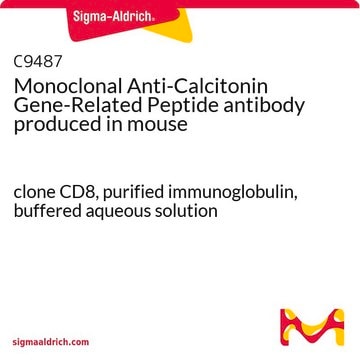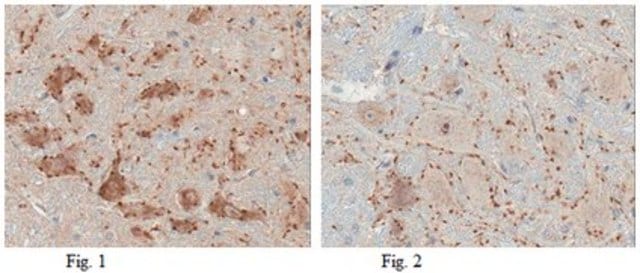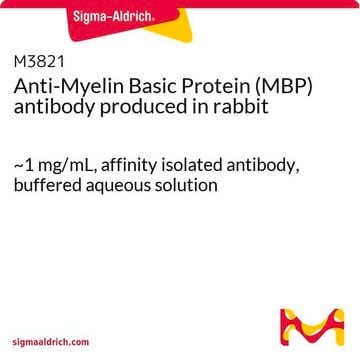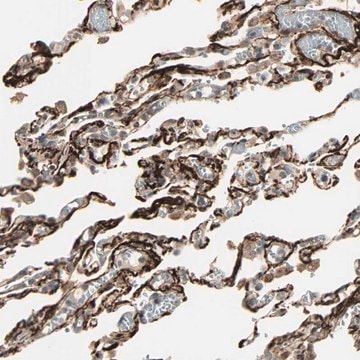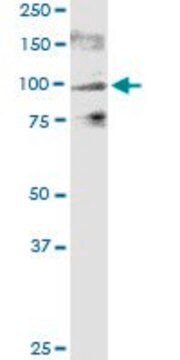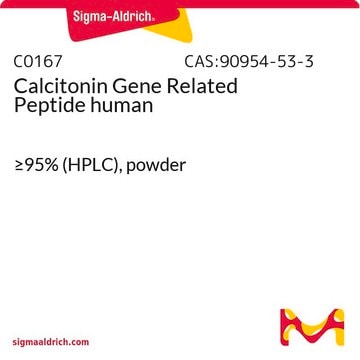C7113
Anti-Calcitonin Gene-Related Peptide antibody, Mouse monoclonal
clone 4901, purified from hybridoma cell culture
Synonyme(s) :
Anti-CALC, Anti-CCALCI, Anti-CGRP-I
About This Item
Produits recommandés
Source biologique
mouse
Niveau de qualité
Conjugué
unconjugated
Forme d'anticorps
purified from hybridoma cell culture
Type de produit anticorps
primary antibodies
Clone
4901, monoclonal
Forme
buffered aqueous solution
Espèces réactives
rat, human, canine
Conditionnement
antibody small pack of 25 μL
Concentration
~2 mg/mL
Technique(s)
immunocytochemistry: suitable
indirect ELISA: 0.5 μg/mL using rat α-CGRP
neutralization: suitable
radioimmunoassay: suitable
Isotype
IgG1
Numéro d'accès UniProt
Conditions d'expédition
dry ice
Température de stockage
−20°C
Modification post-traductionnelle de la cible
unmodified
Informations sur le gène
human ... CALCA(796)
rat ... Calca(24241)
Description générale
Monoclonal Anti-Calcitonin Gene-Related Peptide (CGRP) recognizes rat α-CGRP. The antibody cross-reacts with human and dog α- and β-CGRP.
Immunogène
Application
Immunofluorescence (1 paper)
Immunohistochemistry (1 paper)
Forme physique
Clause de non-responsabilité
Vous ne trouvez pas le bon produit ?
Essayez notre Outil de sélection de produits.
En option
Code de la classe de stockage
10 - Combustible liquids
Classe de danger pour l'eau (WGK)
WGK 3
Point d'éclair (°F)
Not applicable
Point d'éclair (°C)
Not applicable
Certificats d'analyse (COA)
Recherchez un Certificats d'analyse (COA) en saisissant le numéro de lot du produit. Les numéros de lot figurent sur l'étiquette du produit après les mots "Lot" ou "Batch".
Déjà en possession de ce produit ?
Retrouvez la documentation relative aux produits que vous avez récemment achetés dans la Bibliothèque de documents.
Les clients ont également consulté
Notre équipe de scientifiques dispose d'une expérience dans tous les secteurs de la recherche, notamment en sciences de la vie, science des matériaux, synthèse chimique, chromatographie, analyse et dans de nombreux autres domaines..
Contacter notre Service technique



